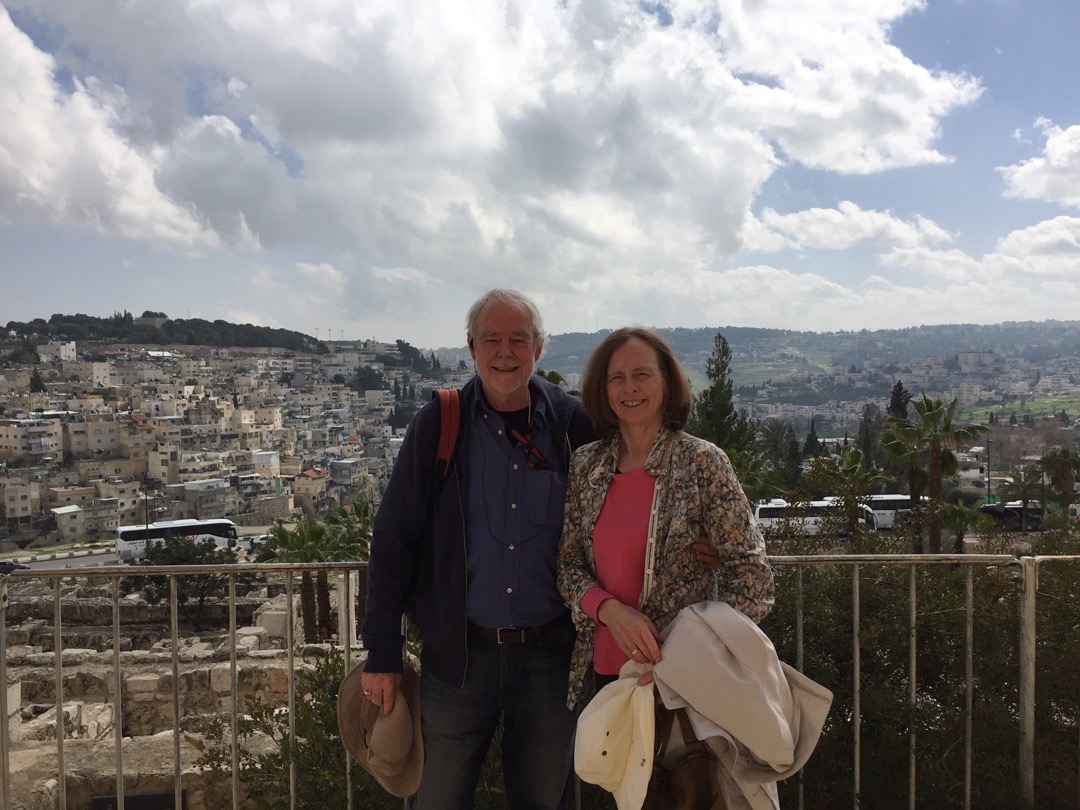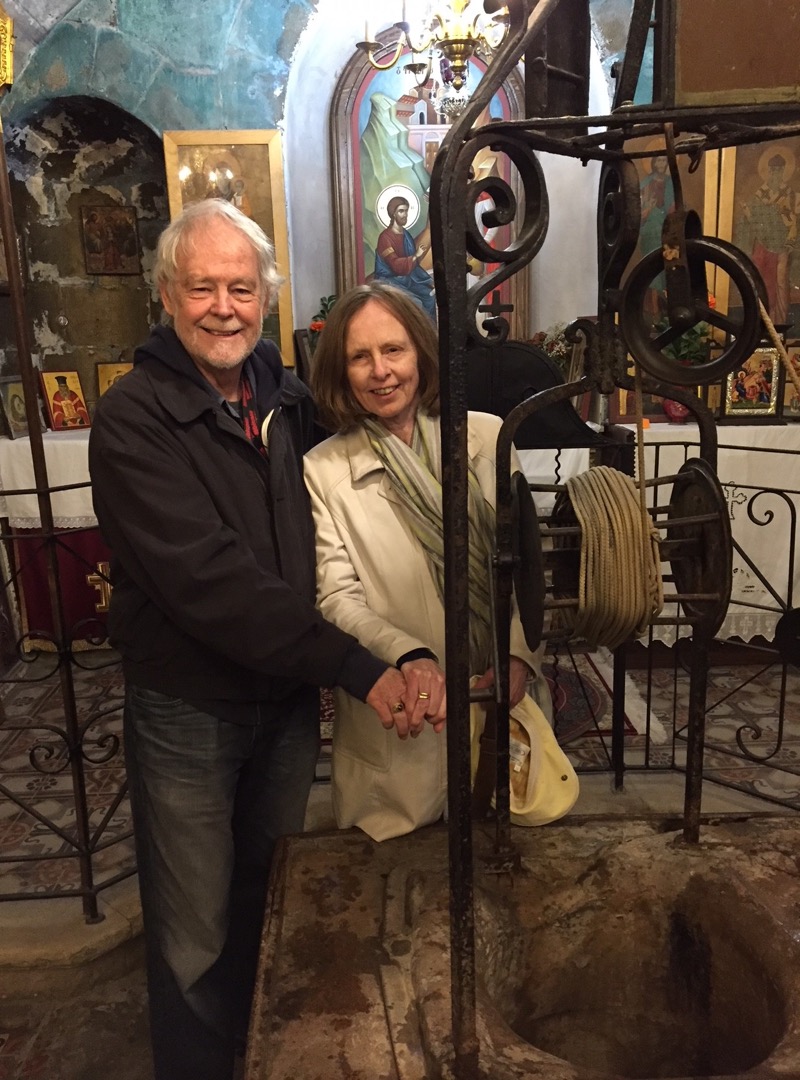by Wayne Fraser and Eleanor Johnston
On a group tour of Israel with Dr. Judy Paulsen, Professor of Evangelism at Wycliffe College, we discovered the sheer numbers of pilgrims and tourists which overwhelm the venerated places of Jesus’ birth and death. Spiritual reflection at the Church of the Nativity in Bethlehem and the Church of the Holy Sepulchre in Jerusalem is virtually impossible with the press of crowds.

What did we expect by being there? Does the star embedded in the floor really mark the place of Jesus’ birth? Jesus was more likely born in Nazareth, not Bethlehem. We were amazed at pilgrims kneeling to kiss the stone where Jesus’ body supposedly lay. The Via Delorosa winds along crowded market streets—the route could have been elsewhere.
In any case, to worship such places, even to call the land holy, invites a kind of idolatry, because the Creator “blessed all that he had made.” All of creation is sacred.
Still, we found it meaningful to gain a sense of Jesus’ movements during his last week.
The Mount of Olives and the Garden of Gethsemane have remained in the same place for 2,000 years, we think. According to our guide, Dr. Steven Notley, Professor of New Testament on the New York City campus of Nyack College, thousands would have camped out in those hills around Jerusalem at Passover. Judas’ kiss would have indicated Jesus’ campsite to the Romans.
Pilate’s quarters and Herod’s palace were near neighbours. Jesus was easily shunted back and forth—a hurried trial, torture and crucifixion, all done before dawn. The temple authorities wanted this troublemaker gone before the common folk awoke.
Recent excavation of the home of a high priest demonstrates the fabulous wealth of collaborators with Rome. Tax collectors and Pharisees had a vested interest in the status quo.
Still drawn to come closer, we walked on what Notley claimed was millenia-old pavement outside the old Eastern Gate. This moment felt authentic as he explained how Jesus and his disciples would have crossed it every time they entered and left Jerusalem.
The Temple Mount itself was a revelation. Jews pray at the Western Wall to be near the Holy of Holies. Muslims believe God brought Mohammed from Mecca to this place. Christians have no specific interest in the Mount—one less player in centuries-old conflicts.
We learned the strategic importance of the river valleys crisscrossing the excellent agricultural soil, providing as well easy travel along the trade routes joining Egypt to the East, hence the reason for battles among warring tribes.

The tour made vivid historical and scriptural connections. At Shiloh, the Israelites placed the Ark of the Covenant under a tent and worshipped there for centuries. Confident God was on their side, they carried the Ark into battle against the Philistines, but lost both.
Centuries later Jeremiah incorporated this calamity into his prophecy against the corruption of the temple in Jerusalem: “Remember Shiloh!” Jesus then echoed Jeremiah in his challenge to the temple authorities: “You have made of my house a den of robbers.”
At sunrise on our first morning, we climbed the Roman rampart to Masada. The view was magnificent from this important place in Jewish history. When the thousand zealots saw that the Romans would enter the fortress on the morrow, all but a handful, left to tell the tale, committed suicide.
This event in 73CE marked the end of Israel until its new creation in 1948. All that time Jews prayed “Next year in Jerusalem.”
The tour taught us the lay of the land and we saw how scripture emerged from the contexts of the writers and their times.
Starting Fresh: Spiritual Resolutions for a Faith-Filled 2026